November 20, 2025 | 02:29 GMT +7
November 20, 2025 | 02:29 GMT +7
Hotline: 0913.378.918
November 20, 2025 | 02:29 GMT +7
Hotline: 0913.378.918
Inside the fence protecting 25 hectares of forest, more than 71,000 baby mangrove trees have grown to 40–50 cm tall, becoming a breeding ground for fish and shrimp and attracting flocks of coots, swallows, etc. to return to nest.
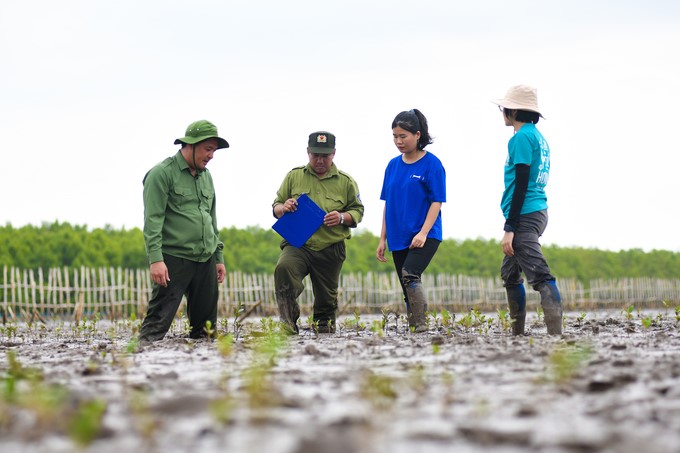
The Net Zero Vinamilk Forest in Mui Ca Mau National Park has miraculously regenerated.
Located deep in the core area of Mui Ca Mau National Park, Net Zero Vinamilk Forest has been implemented by Vinamilk, along with the Gaia Nature Conservation Center and Mui Ca Mau National Park, to nurture and promote regeneration since August 2023. The project has an area of 25 hectares, with the goal of regenerating 100,000–250,000 trees in 6 years (2023–2029).

In less than 9 months since the fence was erected, the forest has welcomed more than 71,000 first-time "residents."
In less than 9 months since the fence was erected, the forest has welcomed more than 71,000 first-time "residents." These are black mangrove trees that sprouted from the seeds of "mother" mangrove trees that fell last August. With a unique lung root system that grows bottom-up, mangrove trees are likened to brave "soldiers," helping to stabilize mud and creating conditions for other plants such as Aegiceras corniculatum, Bruguiera, etc. to encroach towards the sea. Each year, the alluvial land can encroach nearly 100 m into the sea.
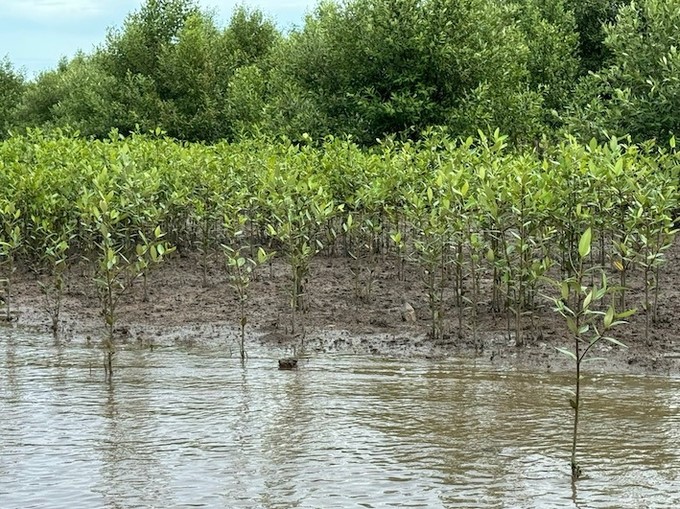
25 hectares of forest regenerated in cooperation with Vinamilk will soon be greened, faster than the initially set goal.
Up to this point, more than 71,000 baby mangrove trees have grown to 40–50 cm tall. Mr. Nguyen Van Su, Head of the Department of Science Technology and International Cooperation at Mui Ca Mau National Park, said that the density of regenerated mangrove trees in Net Zero Vinamilk Forest is quite thick. "With the current rate of development, we believe that the 25 hectares of forest regenerated in cooperation with Vinamilk will soon be greened, faster than the initially set goal," he said.
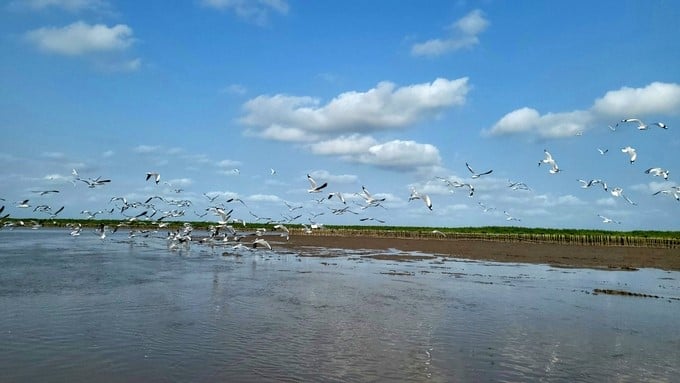
The Net Zero Vinamilk Forest area is bustling thanks to flocks of swallows, coots, etc., with hundreds of heads flying around.
Going by boat from afar, it is easy to recognize the Net Zero Vinamilk Forest area thanks to flocks of swallows, coots, etc., with hundreds of heads flying around, bustling the whole area. According to her many years of experience in nurturing mangrove forests, Ms. Huyen Do, Founder and Director of Gaia Nature Conservation Center, said that this is a very happy sign. Because flocks of birds and storks show that the vegetation and forest biota are developing well.
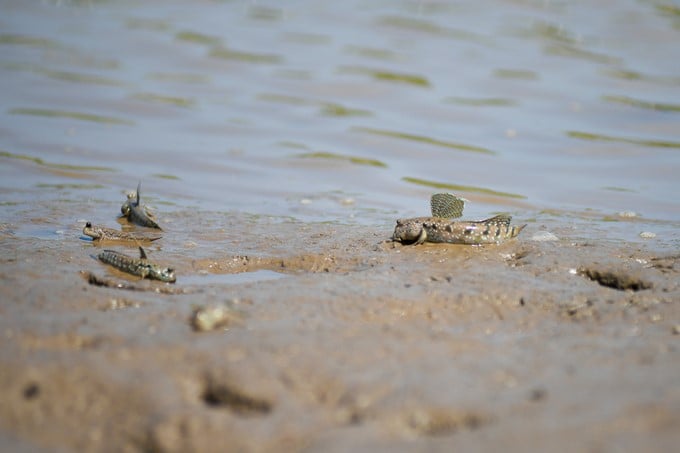
Many species of fish and seafood have come to Net Zero Vinamilk Forest to reproduce.
Thanks to being protected, countless species of fish and seafood have come to Net Zero Vinamilk Forest to reproduce. Swiftly moving on the alluvial ground are giant mudskippers, Boddart's goggle-eyed gobies, sesarmid crabs, snails, etc., looking for food.
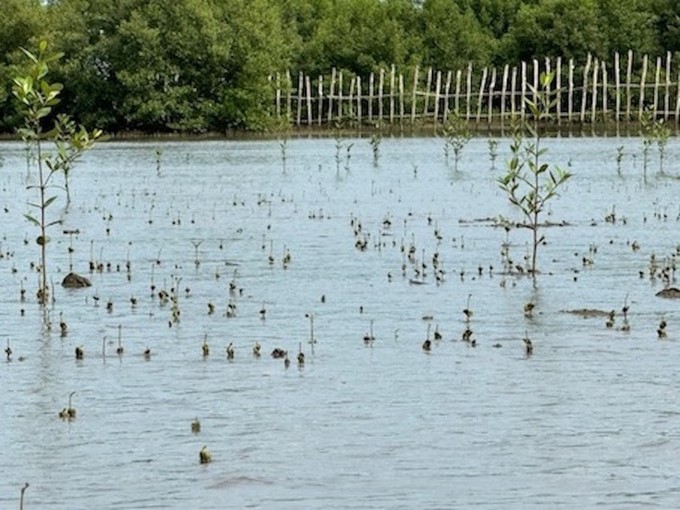
Around the tall mangrove trees, there are countless white mangrove seeds that are sprouting.
The special thing is that around the tall mangrove trees, there are countless white mangrove seeds that are sprouting. According to Ms. Huyen Do, Founder and CEO of Gaia, this is quite strange when the season of mangrove trees shedding seeds and regenerating in Mui Ca Mau National Park is usually around August–October every year.
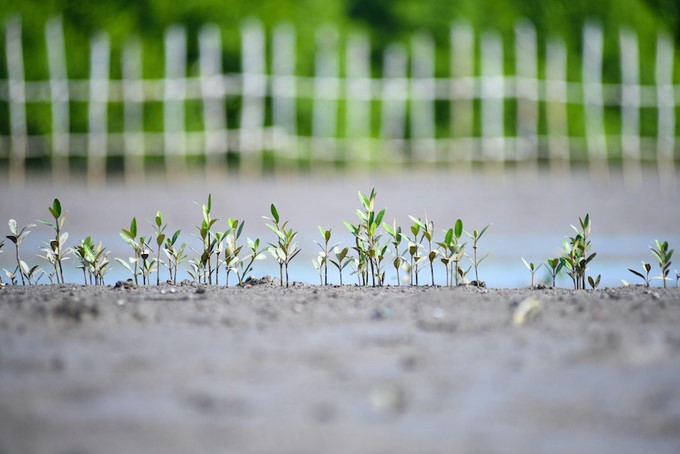
The white mangrove seeds that fell around last May have stayed and sprouted.
"This is a very good sign when the white mangrove seeds that fell around last May have stayed and sprouted. For many years of promoting mangrove forest regeneration, we have rarely seen so many mangrove seeds sprouting in May," said Ms. Huyen.
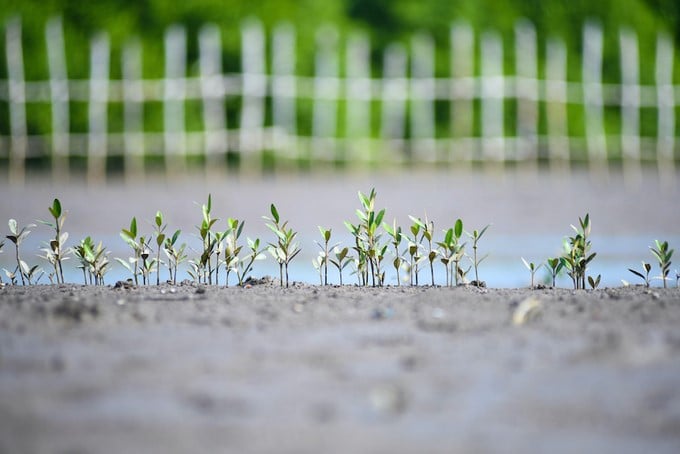
A lot of fish seeds sprout in the Net Zero Vinamilk Forest area.
The area that is currently empty land will gradually be filled with the green of mangrove trees in the next few years, contributing to the expansion of mangrove forests, sea encroachment, and land preservation.
Every year, Vinamilk, Gaia, and Mui Ca Mau National Park will jointly implement works such as reinforcing fences, closely monitoring tree growth, and preventing risks such as diseases and adverse weather to ensure forest regeneration achieves the set goal after 6 years.
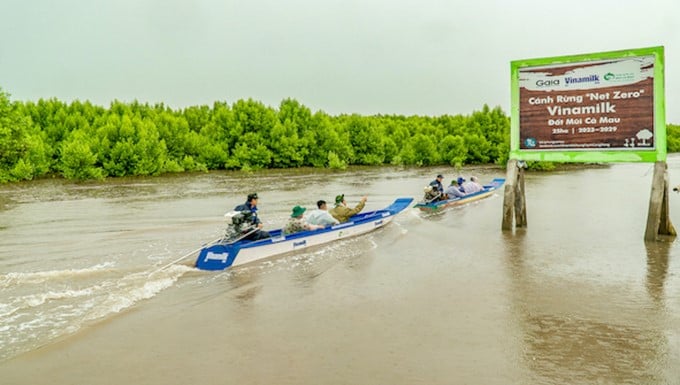
Net Zero Vinamilk Forest is deployed with the goal of building a 'sink' with a capacity of 17,000–20,000 tons of carbon.
With the ability to absorb carbon 4–10 times more effectively than terrestrial forests, Net Zero Vinamilk Forest is deployed with the goal of building a "sink" with a capacity of 17,000–20,000 tons of carbon, equivalent to 62,000–73,000 tons of CO2e. This is one of Vinamilk's specific actions towards the goal of achieving Net Zero by 2050.
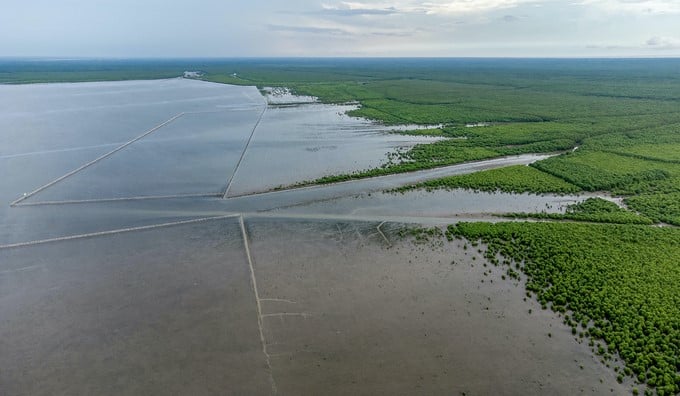
Net Zero Vinamilk Forest is deployed with the goal of building a 'sink' with a capacity of 17,000–20,000 tons of carbon.
Translated by Thu Huyen

(VAN) The agricultural sector agreed on a roadmap to pilot the MRV protocol and expand low-emission rice production from the 2025-2026 winter-spring crop.

(VAN) Agricultural extension officers in Quang Ninh do more than transmit knowledge; they have become a steadfast support system for farmers on the path to sustainable agricultural development.

(VAN) The development of a high-quality beef cattle herd has brought major benefits to livestock farmers, creating jobs and enabling better use of agricultural by-products.

(VAN) In the eastern region of Gia Lai, crossbred cattle now account for 93%, forming a high-quality beef herd and establishing a recognized brand, the result of 35 years of persistent effort.

(VAN) Integrating agricultural extension activities with ecotourism development unlocks promising new avenues for localities boasting specific advantages in grape and apple cultivation.

(VAN) Enterprises and cooperatives accompany farmers in Tay Ninh to develop an organic seedless lime growing area, paving the way for poverty reduction.

(VAN) There were times when Pho faltered, yet his aspiration to bring the pure aroma to those who truly value clean tea kept urging him forward.